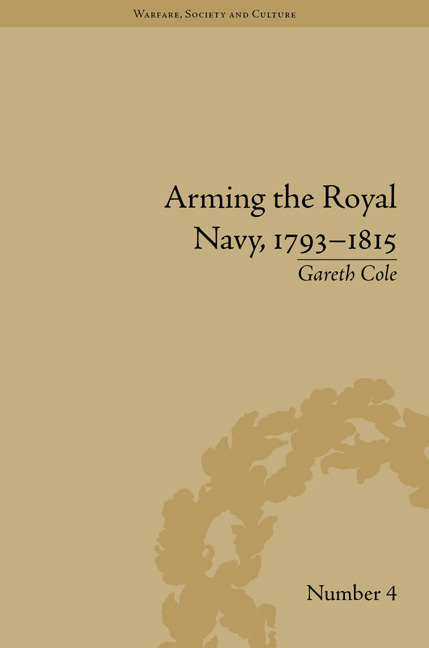Book contents
- Frontmatter
- CONTENTS
- Acknowledgements
- List of Figures and Tables
- Introduction
- 1 The Office of Ordnance and Its Mode of Operation
- 2 Ordnance Relationships with Other Government Departments
- 3 Relations between the Ordnance and Its Contractors
- 4 The Supply of Gunpowder to the Royal Navy
- 5 The Supply of Iron Ordnance to the Royal Navy
- 6 Ordnance Shipping
- 7 The Operations of the Ordnance Outports
- Conclusion
- Notes
- Works Cited
- Index
5 - The Supply of Iron Ordnance to the Royal Navy
- Frontmatter
- CONTENTS
- Acknowledgements
- List of Figures and Tables
- Introduction
- 1 The Office of Ordnance and Its Mode of Operation
- 2 Ordnance Relationships with Other Government Departments
- 3 Relations between the Ordnance and Its Contractors
- 4 The Supply of Gunpowder to the Royal Navy
- 5 The Supply of Iron Ordnance to the Royal Navy
- 6 Ordnance Shipping
- 7 The Operations of the Ordnance Outports
- Conclusion
- Notes
- Works Cited
- Index
Summary
In the period under discussion cannon and carronades were the main offensive weapons on board the ships of the Royal Navy. Without them the ships would have been toothless tigers. With them, they were the most expensive, technical and lethal weapon of war then devised. A single first rate such as Victory carried at least 100 heavy cannon. Using the official establishments the British fleet at Trafalgar carried 2,148 cannon. This compares with Wellington's ninety cannon at the Battle of Vittoria in 1813 (fewer pieces than the Victory on her own). The navies of other nations were also equipped with cannon but far fewer carronades. Sometimes French and Spanish warships were equipped with obusiers (mortars). It was also not unknown for French warships to be equipped with bronze carronades early in the wars.
Although ships were divided into different rates depending on the number of cannon carried (first rate of 100 guns, third rates of seventy-four or sixty-four guns) closer analysis has shown that these were very notional and that ships of the same rate could have very different armaments; even if they carried the same number of guns, these might differ in size and nature, and even the same ship could carry a variety of weaponry over time.
These cannon, although all similar in design, had different characteristics which meant that they were not interchangeable. The light timbers of a brig could not have borne the weight of a 32-pounder.
- Type
- Chapter
- Information
- Arming the Royal Navy, 1793–1815The Office of Ordnance and the State, pp. 87 - 104Publisher: Pickering & ChattoFirst published in: 2014



